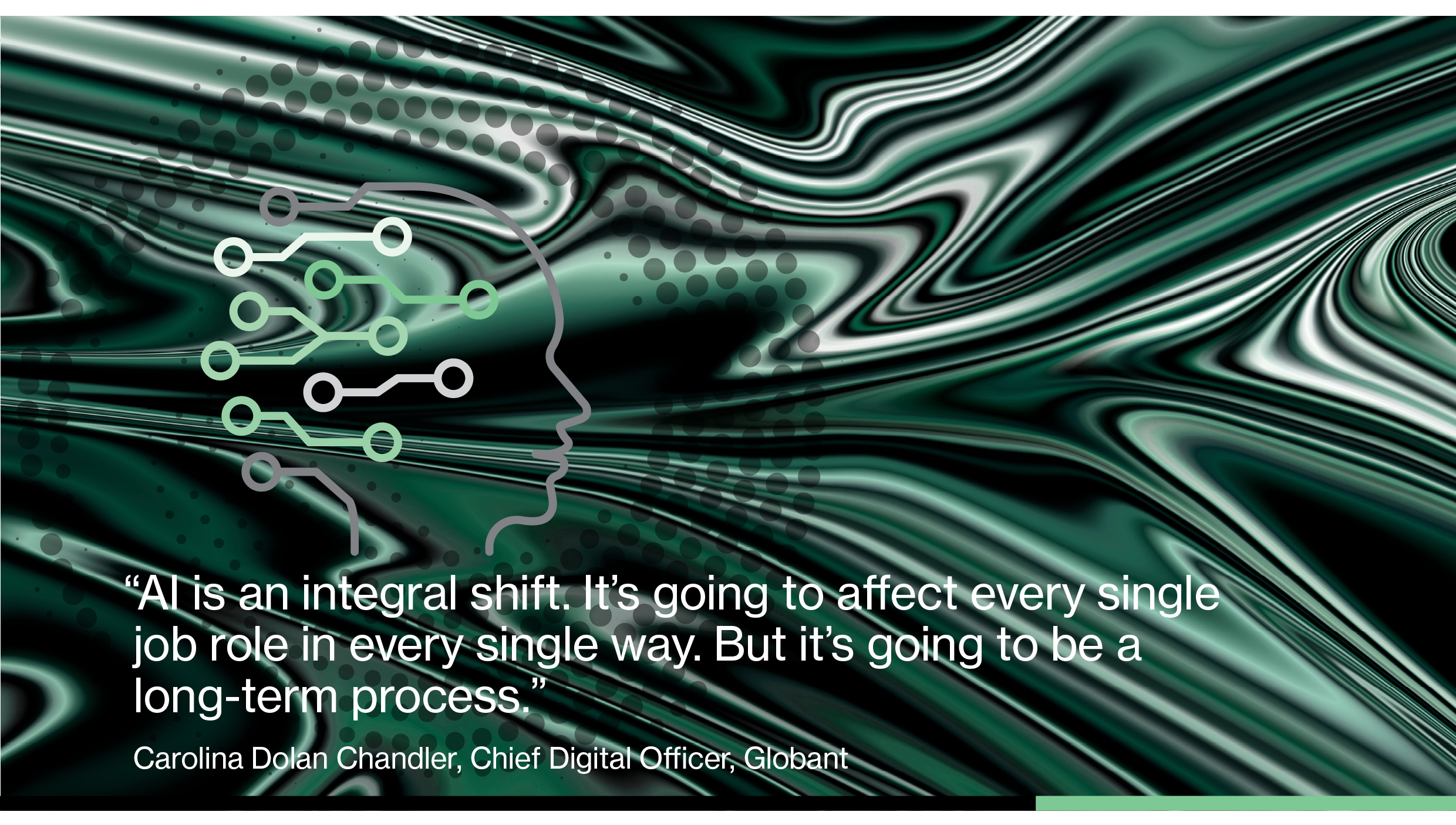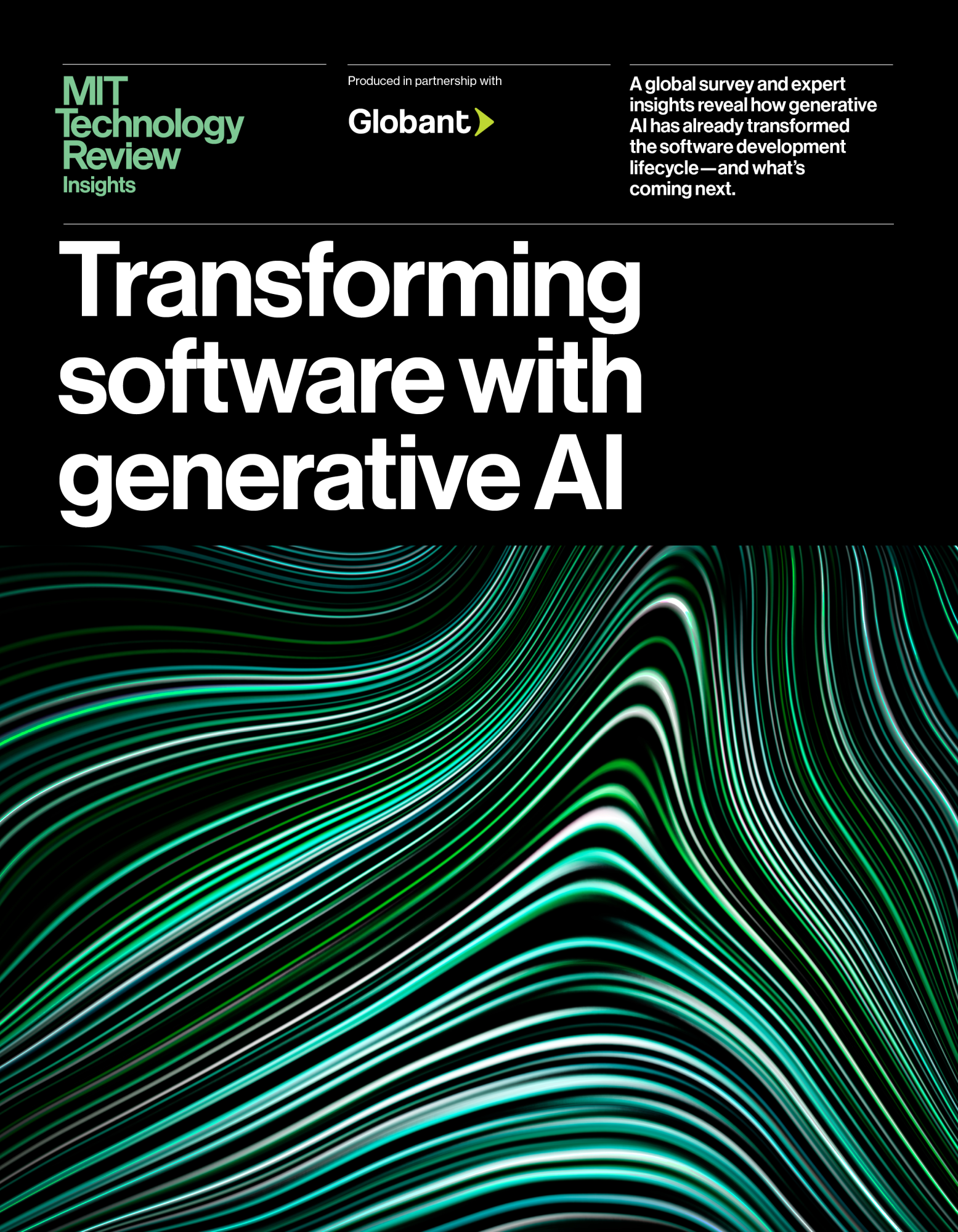Transforming software with generative AI
Generative AI’s promises for the software development lifecycle (SDLC)—code that writes itself, fully automated test generation, and developers who spend more time innovating than debugging—are as alluring as they are ambitious. Some bullish industry forecasts project a 30% productivity boost from AI developer tools, which, if realized, could inject more than $1.5 trillion into the global GDP.
But while there’s little doubt that software development is undergoing a profound transformation, separating the hype and speculation from the realities of implementation and ROI is no simple task. As with previous technological revolutions, the dividends won’t be instant. “There’s an equivalency between what’s going on with AI and when digital transformation first happened,” observes Carolina Dolan Chandler, chief digital officer at Globant. “AI is an integral shift. It’s going to affect every single job role in every single way. But it’s going to be a long-term process.”
Where exactly are we on this transformative journey? How are enterprises navigating this new terrain—and what’s still ahead? To investigate how generative AI is impacting the SDLC, MIT Technology Review Insights surveyed more than 300 business leaders about how they’re using the technology in their software and product lifecycles.
The findings reveal that generative AI has rich potential to revolutionize software development, but that many enterprises are still in the early stages of realizing its full impact. While adoption is widespread and accelerating, there are significant untapped opportunities. This report explores the projected course of these advancements, as well as how emerging innovations, including agentic AI, might bring about some of the technology’s loftier promises.
Key findings include the following:
Substantial gains from generative AI in the SDLC still lie ahead. Only 12% of surveyed business leaders say that the technology has “fundamentally” changed how they develop software today. Future gains, however, are widely anticipated: Thirty-eight percent of respondents believe generative AI will “substantially” change the SDLC across most organizations in one to three years, and another 31% say this will happen in four to 10 years.

Use of generative AI in the SDLC is nearly universal, but adoption is not comprehensive. A full 94% of respondents say they’re using generative AI for software development in some capacity. One-fifth (20%) describe generative AI as an “established, well-integrated part” of their SDLC, and one-third (33%) report it’s “widely used” in at least part of their SDLC. Nearly one-third (29%), however, are still “conducting small pilots” or adopting the technology on an individual-employee basis (rather than via a team-wide integration).
Generative AI is not just for code generation. Writing software may be the most obvious use case, but most respondents (82%) report using generative AI in at least two phases of the SDLC, and one-quarter (26%) say they are using it across four or more. The most common additional use cases include designing and prototyping new features, streamlining requirement development, fast-tracking testing, improving bug detection, and
boosting overall code quality.
Generative AI is already meeting or exceeding expectations in the SDLC. Even with this room to grow in how fully they integrate generative AI into their software development workflows, 46% of survey respondents say generative AI is already meeting expectations, and 33% say it “exceeds” or “greatly exceeds” expectations.
AI agents represent the next frontier. Looking to the future, almost half (49%) of leaders believe advanced AI tools, such as assistants and agents, will lead to efficiency gains or cost savings. Another 20% believe such tools will lead to improved throughput or faster time to market.
This content was produced by Insights, the custom content arm of MIT Technology Review. It was not written by MIT Technology Review’s editorial staff.

